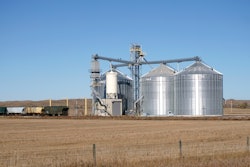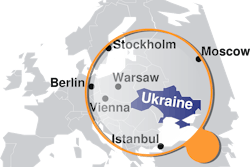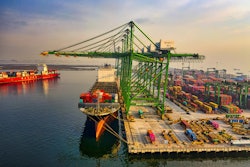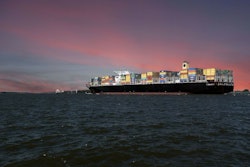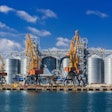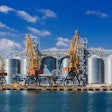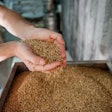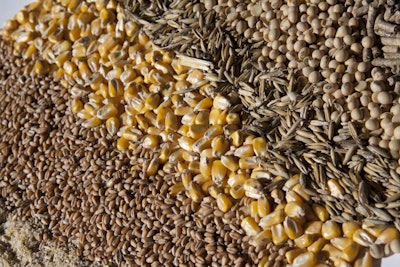
Russia's invasion of Ukraine isblocking Ukraine's access to the Black Sea portsthat normally take about 90% of food exports.
According toreports, vast amounts of Ukraine's grain is stuck in silos because access to ports like Odesa and Mariupol is closed. The July export deadline is both because the grain is needed to meet demand but also tofree up silo capacityfor the next harvest.
The country needs to move millions of tons of grain to earn cash and to prevent a food crisis in the Middle East and Africa.
The European Commission is stepping in with itsEU-Ukraine Solidarity Lanesstrategy.
Solidarity Lanes to help Ukraine export agricultural goods
With its initiative, the commission sets out an action plan to establish ‘Solidarity Lanes' to ensure Ukraine can export grain, but also import the goods it needs, from humanitarian aid to animal feed and fertilizers.
"There are 20 million tonnes of grains have to leave Ukraine in less than three months using the EU infrastructure," said Commissioner for Transport Adina Vălean.
"This is a gigantic challenge, so it is essential to coordinate and optimize the logistic chains, put in place new routes, and avoid, as much as possible, the bottlenecks," Vălean continues.
The communication addresses the emergency solutions but also medium- and long-term measures to better connect and integrate Ukraine's infrastructure with the EU one.
"For both short-term and long-term solutions, we will work with the Ukrainian authorities and in close collaboration, especially with the neighboring member states, who spared no effort in helping during this crisis," said Vălean.
Urgent action to address transport bottlenecks
In spite of immediate efforts by the EU and its member states to ease border crossings between Ukraine and the EU, thousands of wagons and lorries are waiting for clearance on the Ukrainian side.
The average current waiting time for wagons is 16 days, while it is up to 30 days at some borders.
More grain is still stored and held back in Ukrainian silos ready for export.
Among the challenges are differing rail gauge widths: Ukrainian wagons are not compatible with most of the EU rail network, so most goods need to be transhipped to lorries or wagons that fit the EU standard gauge. This process is time-consuming and transhipment facilities along the borders are scarce.
To address these obstacles and set up the Solidarity Lanes, the commission, together with member states and stakeholders, will work on the following priority actions in the short term:
- Additional freight rolling stock, vessels and lorries:The commission calls on EU market players to urgently make additional vehicles available. In order to match demand and supply and establish the relevant contacts, the commission will set up a matchmaking logistics platform and ask member states to designate dedicated Solidarity Lanes contact points (a ‘one-stop shop').
- Capacity of transport networks and transhipment terminals:Ukrainian agricultural export shipments should be prioritized, and infrastructure managers should make rail slots available for these exports. The commission also calls on market players to urgently transfer mobile grain loaders to the relevant border terminals to speed up transhipment.
Aroad transport agreementwith Ukraine will also remove bottlenecks. To encourage EU transport operators to allow their vehicles to enter Ukraine, the commission will also investigate options for top-up financial guarantees. - Customs operations and other inspections:The commission urges national authorities to apply maximum flexibility and to ensure adequate staffing to accelerate procedures at border crossing points.
- Storage of goods on the territory of the EU:The commission will assess available storage capacity in the EU and coordinate with member states to help secure more capacity for temporary storage of Ukrainian exports.
In meantime, the commission will also work on increasing the infrastructure capacity of new export corridors and on establishing new infrastructure connections in the framework of the reconstruction of Ukraine.
The next round of Connecting Europe Facility (CEF) calls for proposals will allow support for projects improving transport connections to Ukraine, including for railway connections and rail-road terminals.
Against this background, the commission adopted a decision with a view to signing a high-level agreement with Ukraine, updating the maps for the Trans-European Transport Network (TEN-T), as part of the commission's policy on extending the TEN-T to neighboring countries.






